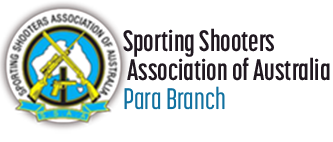
Section Contact Details
Lever Action Captain:
Steve Nicholas – 0419 805 299
Gallery Rifle Match Captain:
David McCarthy – 0414 880 333
Section Program
Lever Action is a shooting discipline that caters exclusively for lever-action rifles.
The discipline includes two categories: Classic Calibre for as-issued rifles in any centrefire cartridge produced up to 1938; and Open Calibre for rifles in any factory, handloaded or wildcat rimfire or centrefire cartridge. Lever Action aims to improve hunting marksmanship skills and includes contour animal profile targets and traditional paper ring targets. The matches require a variety of shooting positions and distances, and courses of fire can vary from 15 seconds to five minutes for five shots.
SSAA Para also shots the Lever Action Gallery Rifle Match. Gallery Rifle includes short- and medium-distance shooting events for rifles and pistols chambered in pistol-calibre cartridges. The international rule book comprises four main events: Gallery Rifle Centrefire, Gallery Rifle Smallbore, Long Barrelled Revolver and Long Barrelled Pistol, though the SSAA principally supports Gallery Rifle Centrefire at a national level. This event is based around scoped and iron-sighted tubular magazine lever-action rifles in .32-20, .38-.357, .44 and .45 pistol calibres. Gallery Rifle matches require the competitor to load and shoot very quickly either at stationary paper or reactive steel targets.
Lever Action Matches
The rifles used for the lever action match fall into two categories, Classic Caliber and Open.
Classic Caliber
Classic Calibre essentially requires a centrefire rifle as issued by the factory having a two-piece wooden stock, traditional open-type iron sights and chambered for any centrefire cartridge factory produced prior to the end of 1938. Wildcat cartridges are not permitted in Classic Calibre. Shooting with the traditional open sights is difficult, but is a great way to improve one’s shooting skills and to understand the various techniques required to shoot accurately.
Open Caliber
Open Calibre is divided into two separate events at the National Championships level, with these being Centrefire and Rimfire, where competitors need two lever-action rifles. At the state and club levels, it is permissible to use either, as only one event is shot and is referred to as the Open event.
The description for the National Open event is any lever-action rifle with a wooden stock, with any calibre, handload or wildcat permitted. Pointed projectiles are not permitted in the rapid-fire events. Peep, vernier and target sights, with the exception of those using optical inserts and/or rubber eyepieces, are permitted.
The Open Calibre Centrefire event basically permits any calibre for which a lever-action rifle is available. Shooters are permitted to use the same centrefire rifle as used in the Classic Calibre event in the Open Calibre Centrefire event.
The Open Calibre Rimfire event currently permits .22LR, .22 Magnum and .17HMR calibres. The .22LR still reigns supreme on the national scene, probably due to the extensive research and development over the years on target-quality ammunition.
Gallery Rifle
Gallery Rifle Centrefire (GRCF) is based around scoped and iron-sighted tubular magazine lever-action rifles in traditional pistol calibres, such as the .32-20, .38-.357, .44 and .45. Other types of pistol-calibre rifles are supported in side events. Most GRCF events are shot at distances between 10 and 50m and mirror popular pistol competitions with some adaptation to accommodate tubular magazine lever-action rifles. Competitions include both deliberate precision and action-type events that require a shooter to load and shoot very quickly, such as Falling Plate, Barricade, 50m Precision, Practical, Los Alamitos and The Mover. For a full list of matches, consult the GRCF rule book.
The most common shooting position is standing unsupported, but some events do test the shooter’s agility and skills from other positions, such as sitting, kneeling and shooting from the weaker shoulder. Targets can be stationary paper, and turning, reactive and steel plates. Individual range templates and energy/velocity limitations will govern ammunition choice.
